Price:₹18,000.00
Gaumukh Trek : A Journey to the source of River The Holy River Ganga in,”Gaumukh” refers to the source of the River Ganga, Uttarakhand, Himalayas,
Gaumukh is a sacred site located in the Uttarkashi district of Uttarakhand, India, in the Garhwal Himalayas. The name “Gaumukh” translates to “cow’s mouth” in Hindi, and it is named so because the shape of the glacier’s terminus resembles the mouth of a cow.
Gaumukh Trek – The Holy River Ganges is the most sacred river in the Hindu religion and its source at Gaumukh at the Gangotri glacier.The glacier follows Westerly route located below Chaukhamba Mountain, the highest peak of the Group.This is the only Ganga valley from where one can see Bhagirathi peak – I, II, III, Shivling Peak and Matri Peak, Raktvan. , all together. One can also see the Tapovan and Nill Tal (4400 mt) peaks from here.
The Gaumukh Trek is one of the most revered and scenic treks in India, leading adventurers to the source of the sacred River Ganga in the Uttarakhand region of the Himalayas. Here’s an overview of what to expect on this incredible journey:
- Location: The trek begins from Gangotri, a small town in Uttarakhand, which serves as the base camp for the trek. Gangotri is easily accessible from major cities like Dehradun and Rishikesh.
- Route: The trek route takes you through breathtaking landscapes, including dense forests, meadows, and rugged terrain. You’ll pass through quaint villages and get glimpses of traditional Himalayan life.
- Scenery: Throughout the trek, you’ll be treated to stunning views of snow-capped peaks, including the towering Bhagirathi sisters. The trail offers panoramic vistas of the surrounding valleys and glaciers.
- Spiritual Significance: The Gaumukh Glacier is considered the source of the River Ganga, which holds immense spiritual significance for Hindus. Many pilgrims undertake this trek as a part of their religious journey to pay homage to the holy river.
- Moderate Terrain: While the trek is not extremely technical, it does involve some challenging sections, including steep ascents and descents, rocky paths, and moraines. It’s essential to be in good physical condition and acclimatize properly to the altitude.
- Duration: The trek usually takes around 06 days from Dehradun to Dehradun to complete, covering a distance of approximately 18-20 kilometers (one way). However, the duration can vary depending on factors like weather conditions and the fitness level of the trekkers.
- Permits and Regulations: Since the trek passes through the Gangotri National Park, trekkers need to obtain permits from the forest department. It’s essential to follow all rules and regulations to ensure the preservation of the fragile ecosystem.
- Best Time to Visit: The ideal time to undertake the Gaumukh Trek is during the summer months, from May to June, and post-monsoon season, from September to October. During these times, the weather is relatively stable, and the trails are accessible.
Gangotri – The shrine of Gangotri is situated at an elevation of 3200 m surrounded by Deodars (Cider) and Chir (pine).
Gangotri is indeed a significant pilgrimage site and a beautiful destination situated at an elevation of approximately 3200 meters (10,500 feet) in the Uttarkashi district of Uttarakhand, India. Here are some key points about Gangotri:
- Pilgrimage Destination: Gangotri is one of the Char Dham pilgrimage sites in Hinduism, along with Yamunotri, Kedarnath, and Badrinath. It holds immense religious significance as it is believed to be the place where the River Ganga descended to Earth from heaven.
- Elevation and Surroundings: As you mentioned, Gangotri is surrounded by lush forests primarily consisting of Deodar (Cedar) and Chir (Pine) trees. The pristine surroundings and the lofty Himalayan peaks contribute to the serene and tranquil atmosphere of the region.
- Shrine of Gangotri: The main attraction of Gangotri is the Gangotri Temple, dedicated to Goddess Ganga. The temple is constructed of white granite and is an architectural marvel. It opens every year on the auspicious day of Akshaya Tritiya (usually in April or May) and closes on the day of Diwali (usually in October or November), marking the end of the pilgrimage season.
- Ganga Aarti: One of the highlights of visiting Gangotri is witnessing the mesmerizing Ganga Aarti ceremony performed at the banks of the Bhagirathi River, which originates from the Gangotri Glacier. The aarti is a deeply spiritual ritual where lamps are lit, and prayers are offered to the river.
- Trekking and Adventure: Gangotri serves as the base camp for several treks, including the popular Gaumukh Trek, which leads to the source of the Ganges at the Gaumukh Glacier. Trekkers and adventure enthusiasts flock to Gangotri to explore the surrounding Himalayan terrain and glaciers.
- Natural Beauty: Apart from its religious significance, Gangotri is renowned for its natural beauty. The scenic vistas of snow-capped peaks, gushing rivers, and verdant valleys attract nature lovers and photographers from around the world.
Short Itinerary Gangotri Gaumukh Trek
Day 1- Pickup to you from Dehradun – Drive to Gangotri – 258 km) (0/10 Hours) (3415 Meter) Overnight stay Hotel
Mode of journey – By Tempo Traveller 13+D
Day 2 – Trek from Gangotri to Chirbasa camp (09 km) (5/6 Hours) (3580 Meter ) Overnight stay Camp
Mode of journey – On foot
Day 3 – Trek from Chirbasa camp to Bhojbasa camp (5 km) (3/4 Hours) (3775 Meter ) Overnight stay Camp
Mode of journey – On foot
Day 4- Trek from Bhojbasa camp to Goumukh Glacier (08 km) (6/7 Hours) then back to Bhojbasa Camp Overnight stay Camp
Mode of journey – On foot
Day 5- Trek from Bhojbasa camp to Gangotri (14 km) (6/7 Hours) (3415 Meter) Overnight stay Hotel
Mode of journey – On foot
Day 6– Drive from Gangotri to Dehradun (258 km) (10/ 11 Hours)
Mode of journey – By Tempo Traveller 13+D
Sun setting on the greater beautiful Mountain range in Gaumukh Trek
Tapovan camp. Which is located on the confluence of the Ganga Valley River at Gangotri right The Holy River Ganges is the most sacred river in the Hindu religion and its source at Gaumukh at the Gangotri glacier.
During the Gaumukh Trek, witnessing the sunset over the majestic peaks of the Himalayas is truly a breathtaking experience. As the sun dips below the horizon, it casts a golden glow over the snow-capped summits, painting the sky in hues of orange, pink, and purple. Here’s a description of what it might be like to watch the sunset on the greater beautiful mountain range during the Gaumukh Trek:
As evening approaches and the sky begins to change colors, trekkers find themselves in awe of the natural spectacle unfolding before them. They may choose a vantage point, perhaps a high ridge or a rocky outcrop, where they can get an unobstructed view of the towering peaks that surround them.
As the sun descends lower in the sky, its warm rays illuminate the rugged contours of the mountains, casting long shadows across the landscape. The glaciers and snowfields glisten in the fading light, creating a magical ambiance that seems to transport observers to another world.
As the minutes pass, the colors intensify, with the sky turning into a canvas of vibrant hues. The jagged peaks stand silhouetted against the fiery backdrop, creating a dramatic contrast between light and dark.
As the last rays of sunlight disappear behind the mountains, the sky slowly transitions from gold to pink to indigo. The stars begin to emerge one by one, casting their twinkling light upon the tranquil landscape below.
For those fortunate enough to witness this spectacle, it’s a moment of pure awe and wonder—a reminder of the beauty and majesty of the natural world. As darkness settles in and the mountains fade into silhouette, trekkers carry the memory of the sunset with them, a cherished moment of serenity amid the rugged grandeur of the Himalayas.
Beautiful Campsite of Gaumukh Trek
During the Gaumukh Trek, there are several beautiful campsites where trekkers can rest and enjoy the stunning Himalayan scenery. One such picturesque campsite is known as Bhojbasa. Here’s why it’s considered a beautiful campsite along the Gaumukh Trek:
- Scenic Location: Bhojbasa is situated at an elevation of around 3,800 meters (12,500 feet) above sea level, offering trekkers breathtaking views of the surrounding Himalayan peaks. The campsite is nestled along the banks of the roaring Bhagirathi River, providing a serene and tranquil setting amidst the rugged wilderness.
- Close Proximity to Gaumukh Glacier: Bhojbasa serves as a midway point between Gangotri and Gaumukh, making it an ideal spot to rest and acclimatize before continuing the trek to the source of the Ganges. From Bhojbasa, trekkers can catch glimpses of the towering peaks and glaciers that lead up to Gaumukh.
- Natural Beauty: The campsite at Bhojbasa is surrounded by pristine alpine meadows dotted with colorful wildflowers during the summer months. The snow-capped peaks of Shivling, Bhagirathi, and Meru form a stunning backdrop, creating a postcard-perfect setting for camping and photography.
- Sunrise and Sunset Views: One of the highlights of camping at Bhojbasa is the opportunity to witness spectacular sunrise and sunset views over the Himalayas. As the first light of dawn illuminates the snow-covered peaks, and the last rays of sunlight paint the sky in hues of orange and pink, trekkers are treated to a mesmerizing display of nature’s beauty.
- Peaceful Atmosphere: Despite its popularity among trekkers, Bhojbasa retains a peaceful and serene atmosphere, allowing visitors to connect with nature and enjoy moments of solitude amidst the majestic mountains.
Best Time to visit Gaumukh Trek ?
The best time to visit the Gaumukh Trek depends on your preferences and what you aim to experience during your journey. However, there are a few key factors to consider when planning your trip:
- Weather: The weather in the Himalayas can be quite unpredictable, with harsh winters and monsoon rains making certain times of the year less favorable for trekking. The best time to visit Gaumukh Trek is typically during the summer months (May to June) and post-monsoon season (September to October). During these times, the weather is relatively stable, with clear skies and pleasant temperatures, making trekking more enjoyable and offering better views of the surrounding landscape.
- Accessibility: Gaumukh Trek involves traversing rugged terrain and crossing glacial streams, which can be challenging during the winter months when certain sections of the trail may be covered in snow or ice. Therefore, the trek is usually closed during the winter season (November to April) due to heavy snowfall and the risk of avalanches. It’s essential to check the current trail conditions and accessibility before planning your visit.
- Crowds: The summer months, especially May and June, tend to be the busiest times for trekking in the Himalayas, including Gaumukh Trek, as the weather is favorable and many people plan their trips during this time. If you prefer fewer crowds and quieter trails, consider visiting during the post-monsoon season in September and October when the weather is still pleasant, but the number of trekkers is relatively lower.
- Flora and Fauna: Another factor to consider is the opportunity to witness the rich biodiversity of the region. Spring (April to June) brings blooming rhododendrons and other wildflowers, while autumn (September to October) offers vibrant foliage colors as the leaves change. Wildlife sightings are also more common during these seasons, adding to the overall experience of the trek.
Ultimately, the best time to visit Gaumukh Trek is during the summer and post-monsoon months (May to June and September to October) when the weather is favorable, the trails are accessible, and you can fully appreciate the beauty of the Himalayas. However, it’s essential to plan and prepare accordingly, taking into account factors like weather conditions, trail accessibility, and personal preferences.
How Difficult is Gaumukh trek
The difficulty level of the Gaumukh Trek can vary depending on various factors such as altitude, terrain, weather conditions, and individual fitness levels. Here’s an overview of the difficulty level and altitude of key points along the Gaumukh Trek, including Chirbasa and Bhojbasa:
- Chirbasa: Chirbasa is the first campsite along the Gaumukh Trek, located at an altitude of approximately 3,550 meters (11,647 feet) above sea level. The trek from Gangotri to Chirbasa is relatively moderate, covering a distance of around 9 kilometers (approximately 5.6 miles). The trail gradually ascends through lush forests of pine and deodar trees, with occasional steep sections. Trekkers may experience a moderate level of difficulty due to the altitude gain, but it’s generally manageable for most people with proper acclimatization.
- Bhojbasa: Bhojbasa is the second campsite along the Gaumukh Trek, situated at an altitude of approximately 3,800 meters (12,500 feet) above sea level. The trek from Chirbasa to Bhojbasa is relatively short, covering a distance of around 5 kilometers (approximately 3.1 miles). However, the altitude gain and terrain become more challenging as trekkers ascend higher into the Himalayas. The trail follows the banks of the Bhagirathi River, with rocky terrain and occasional moraines. Trekkers may experience a moderate to strenuous level of difficulty due to the altitude and terrain, especially if they haven’t acclimatized properly.
Gaumukh trek safe for beginner trekkers ?
The Gaumukh Trek can be suitable for individuals within a wide age range, including children as young as 10 years old and adults up to the age of 60 and above, provided they are in good health, have a reasonable level of fitness, and take necessary precautions. Here’s some information about the safety considerations, route, and location of the Gaumukh Trek:
- Safety Considerations:
- Health and Fitness: It’s essential for all trekkers, regardless of age, to be in good health and have a reasonable level of fitness to undertake the Gaumukh Trek. The trek involves walking for several days at high altitudes, which can be physically demanding.
- Altitude Acclimatization: Proper acclimatization is crucial, especially for older adults and children, to prevent altitude-related illnesses such as altitude sickness. It’s recommended to ascend gradually, stay hydrated, and listen to your body’s signals.
- Weather Conditions: Weather in the Himalayas can be unpredictable, with sudden changes in temperature and the possibility of rain or snow. It’s essential to pack appropriate clothing and gear for varying weather conditions.
- Medical Considerations: Trekkers of all ages should consult with a healthcare professional before undertaking the trek, especially those with pre-existing medical conditions. It’s advisable to carry necessary medications and a basic first-aid kit.
- Route and Location:
- Starting Point: The Gaumukh Trek typically starts from Gangotri, a small town in Uttarakhand, India. Gangotri is accessible by road from major cities like Dehradun and Rishikesh.
- Trekking Route: From Gangotri, trekkers follow a well-defined trail that passes through scenic landscapes, including forests, meadows, and glacial moraines. The route takes trekkers to key waypoints such as Chirbasa, Bhojbasa, and ultimately Gaumukh, the source of the River Ganga.
- Duration: The trek usually takes around 6-7 days to complete, covering a distance of approximately 18-20 kilometers (one way). However, the duration can vary depending on factors like weather conditions, acclimatization, and the pace of the trekking group.
We are Per Day Climb Altitude for Gaumukh Trek
Note: – Level: The trek experience and moderate Gaumukh & Tapovan, Nandanvan Trek is classified Trek .We are going about. In altitude per day.
Gangotri -10,145 feet
Chirbasa camp – 11,761 feet
Bhojbasa camp – 12,450 feet
Gaumukh – 13,200 feet
Key Points of Gaumukh Trek
Duration: – 06 Days 5 Nights from Dehradun to Dehradun
Best Season: – April, May, June, September, October,
Level: – The trek experience, Moderate,
Trail of type: – Trek Start. Dehradun is the beautiful city near rail head and base camp .Gangotri base camp
Highest Points: – 13,215 feet
Trekking distance – 36 km.)
Gaumukh Trek Route Location: –Dehradun, Gangotri, Chirbasa, Bhojbasa, Gaumukh Glacier
It is located in the northeastern part of Uttarakhand starting from close to the Chaina border, heading east and then south
Started point: – Pick up to you Dehradun, .Railway Station and (I.S.B.T)
- You got to see so many heavenly bodies at one place like the panoramic view of the Himalayan ranges, you can see pine forests, different variety of flora and fauna surpassing through bona fide Garhwali culture.
- I think Do spare time in Interaction with our local’s team, and you will get to know about some of the ancient tales of Indian mythology and our local cultures, this is good ideas for trekkers
How to reach dehradun for Gaumukh trek ?
- To reach Dehradun for the Gaumukh Trek, you have several options depending on your starting point. Here’s how you can reach Dehradun, which serves as a gateway to the trek:
- By Air:
- Dehradun has its own airport called the Jolly Grant Airport (DED), which is located approximately 30 kilometers east of the city center.
- You can book a flight to Dehradun from major cities like Delhi, Mumbai, Bangalore, and Kolkata.
- From the airport, you can hire a taxi or use pre-paid taxi services to reach Dehradun city center or directly to Gangotri, the starting point of the Gaumukh Trek.
- By Train:
- Dehradun is well-connected by rail to various cities across India. The Dehradun Railway Station (DDN) is located in the city center.
- You can book train tickets to Dehradun from major cities like Delhi, Mumbai, Kolkata, Chennai, and Bangalore.
- From the railway station, you can hire a taxi or use public transportation to reach your accommodation in Dehradun or directly to Gangotri for the Gaumukh Trek.
- By Road:
- Dehradun is well-connected by road to major cities and towns in North India. You can either drive your own vehicle or use bus services.
- Several state-run and private buses operate from cities like Delhi, Chandigarh, Haridwar, and Rishikesh to Dehradun.
- If you’re traveling from Delhi, you can take a bus from the Inter-State Bus Terminal (ISBT) in Delhi to reach Dehradun.
- From Dehradun, you can hire a taxi or use public transportation to reach Gangotri, the starting point of the Gaumukh Trek. The journey from Dehradun to Gangotri takes approximately 10-12 hours by road.
- By Air:
-
For Himalayan Hikers or trekkers, it’s crucial to have some emergency medical support available, given the remote and rugged terrain they often traverse. Here are some essential medical supplies to consider carrying:
- First Aid Kit: Include bandages, antiseptic wipes, adhesive tape, gauze pads, scissors, tweezers, and a CPR mask.
- Oxygen cylinder- Oxygen can be beneficial in alleviating symptoms of altitude sickness, such as headache, dizziness, nausea, and shortness of breath. Administering oxygen can provide relief and help prevent the condition from worsening.
- Personal Medications: Any prescribed medications should be carried in sufficient quantities.
- Pain Relief: Ibuprofen or acetaminophen for pain relief in case of minor injuries or headaches.
- Antihistamines: For allergic reactions and insect bites.
- Anti-diarrheal Medication: Such as loperamide, in case of gastrointestinal issues.
- Water Purification Tablets: In areas where clean water may not be readily available.
- Blister Treatment: Moleskin or blister pads for foot care.
- Tweezers: For removing splinters or ticks.
- Emergency Blanket: To keep warm in case of exposure.
- Whistle and Signal Mirror: For attracting attention in emergencies.
- Flashlight or Headlamp: Essential for navigating in the dark or signaling for help.
- Emergency Communication Device: Such as a satellite phone, PLB (Personal Locator Beacon), or a two-way radio for calling for help if needed.
- Basic Wilderness First Aid Guide: To assist in treating common injuries or illnesses.
- Sun Protection: Sunscreen, sunglasses, and a wide-brimmed hat to protect against sunburn.
- Emergency Shelter: Lightweight emergency shelter or tarp for protection from the elements.
It’s also essential for hikers to have basic knowledge of first aid and wilderness survival skills. Additionally, informing someone of your hiking plans and expected return time can be crucial in case of emergencies. Always be prepared and stay safe while exploring the beautiful but challenging Himalayan terrain.
Himalayan Hikers – Provided food During the Gangotri Gaumukh Trek
– We serve five -05 times meals a day including- Breakfast, Lunch, Eevening Snakes, Soup, Dinner, A variety of delectable and healthy food is provided which includes; Indian, Chinese and other Western meals. They are nutritious and keep you fit and healthy on the trek.(Veg food) With our local food and Day Pack, for Summit Day like fresh fruits
Food Menu– Roti + Rice + Salad + Papad +Matter paneer +Daal +mix veg+ daily more vegetable +sweet+ Bread +Nutella + jam + butter +Muesli, Milk+Banana+ Allo parantha +Tea & coffee Cornflakes, Milk +Bread, Peanut Butter +Pancake +Plain parantha +Fruits+ Porridge Oats+ +Bread & cheese +Poha + Gulab Jamun+ Custard+ Jalebi+ Chilla +Honey+ Puri + Chole more
Note: – This is only list Himalayan Hikers Team or Cook provide you more healthy food and more items of per day menu
The type of food provided during a trek can vary depending on factors like the location, duration, and the trekking company or organization you’re with. However, there are some common types of food that are often included in trekking provisions:
- Carbohydrates: Foods high in carbohydrates provide energy for the trek. This includes items like rice, pasta, bread, and potatoes. More
- Proteins: Protein-rich foods help with muscle repair and recovery. Common protein sources include lentils, beans, tofu, meat (if available), eggs, and dairy products.
- Fruits and vegetables: These provide essential vitamins, minerals, and fiber. While fresh produce may not always be available, dried fruits and vegetables or canned options might be included.
- Snacks: Trekking often involves long hours of physical exertion, so snacks are important for quick energy boosts. Snacks like nuts, energy bars, trail mix, and chocolate are common choices.
- Local cuisine: Depending on the region you’re trekking in, you might also get the chance to sample local dishes. This can be a delightful way to experience the culture and flavors of the area.

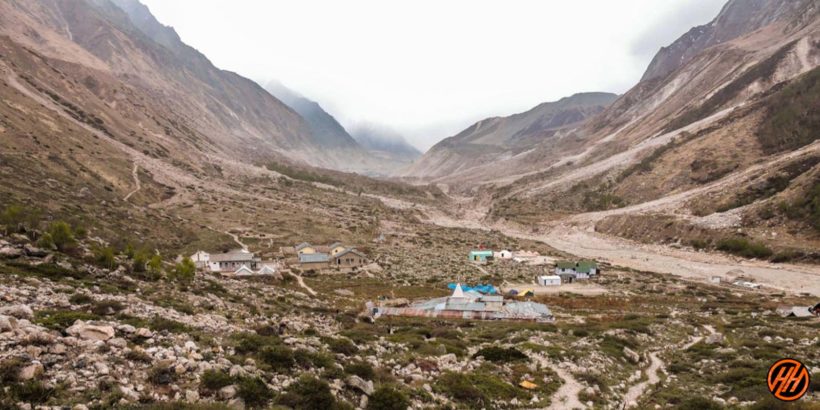









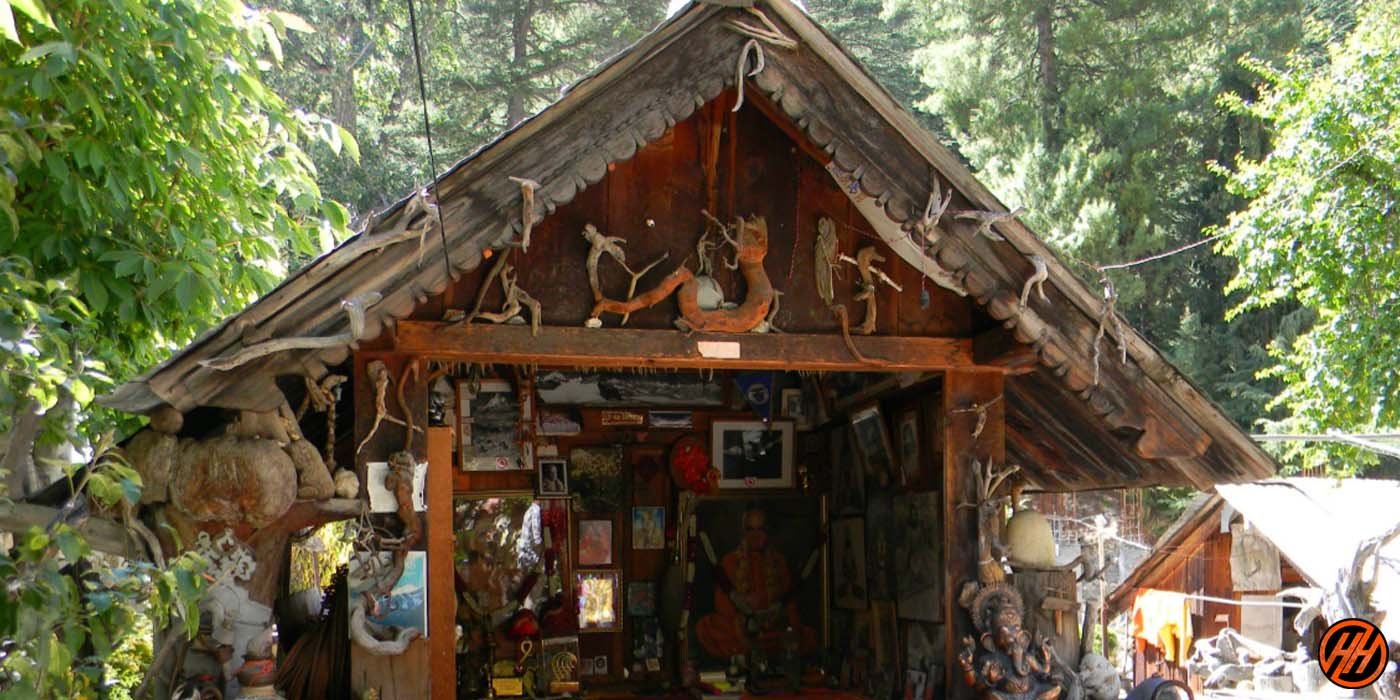
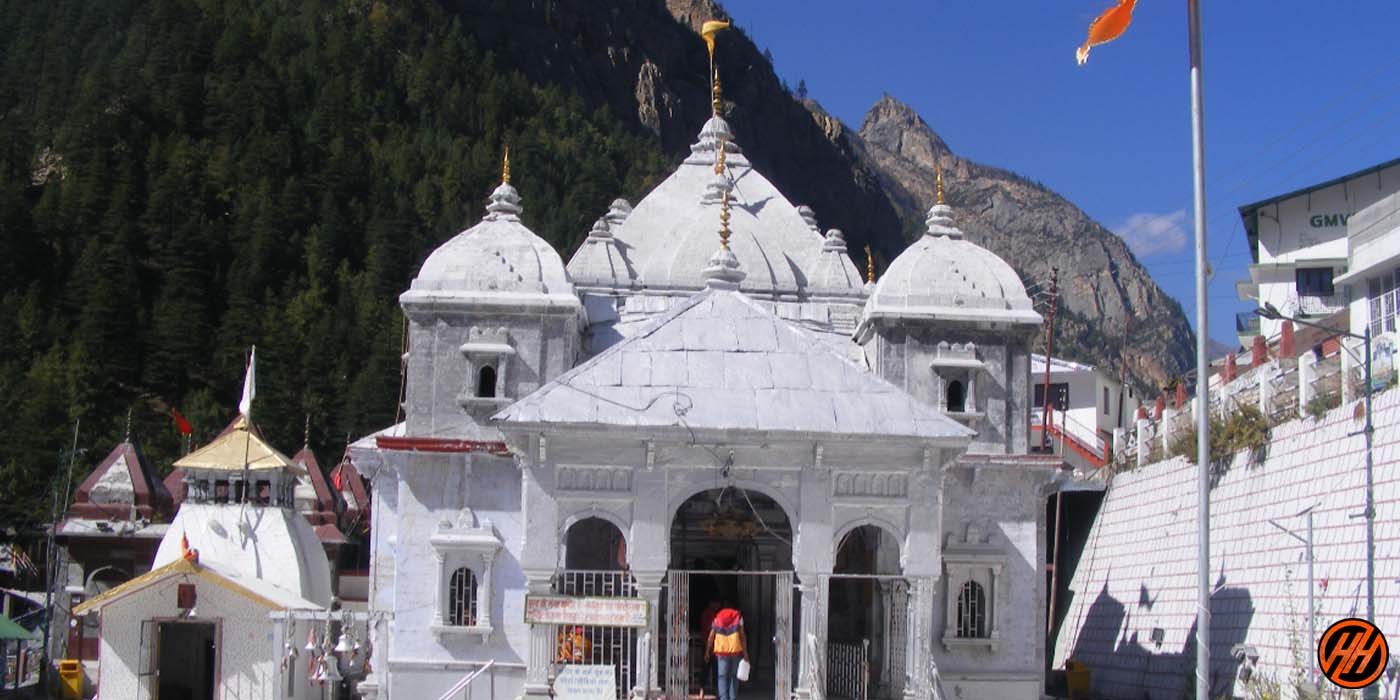
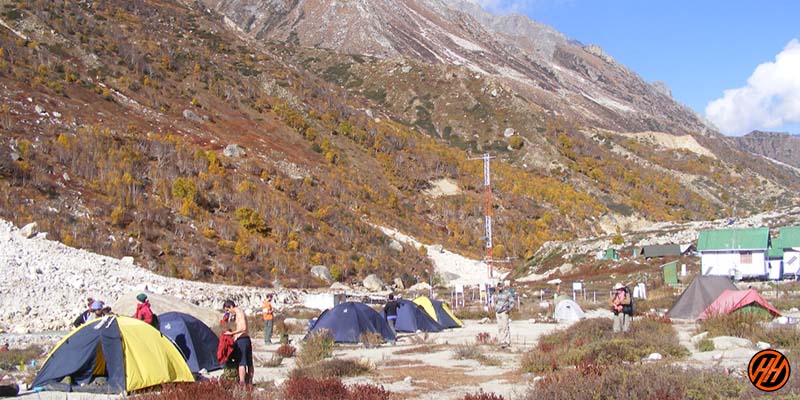
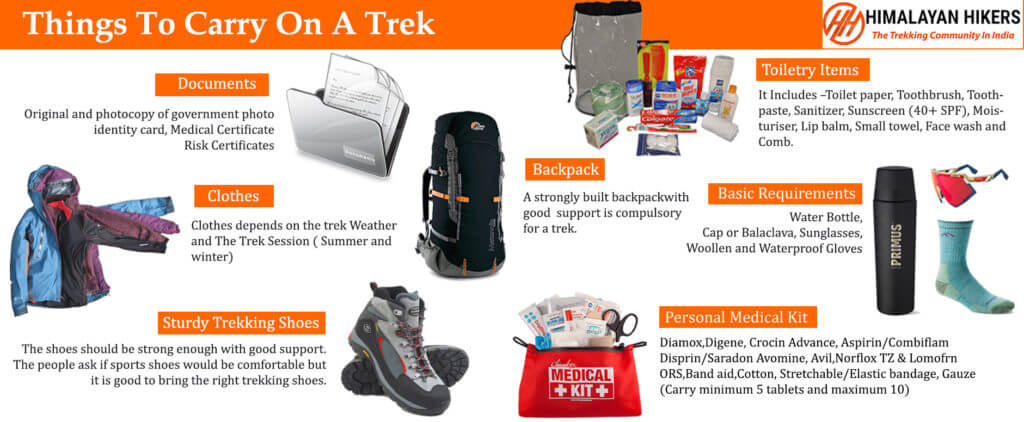


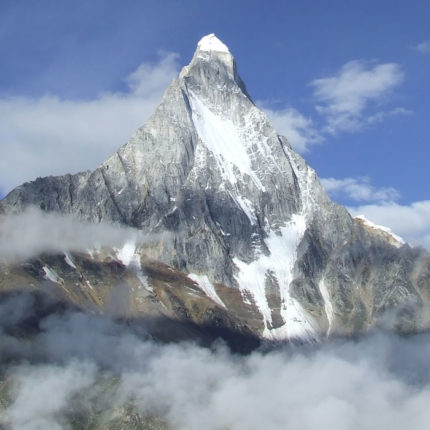
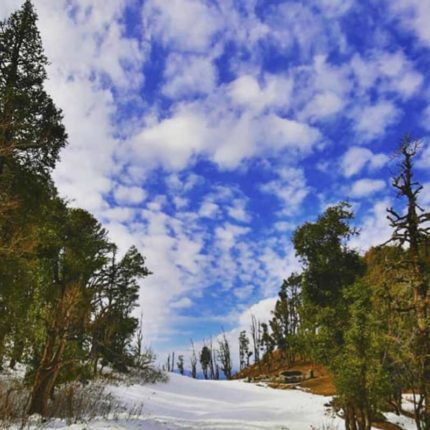
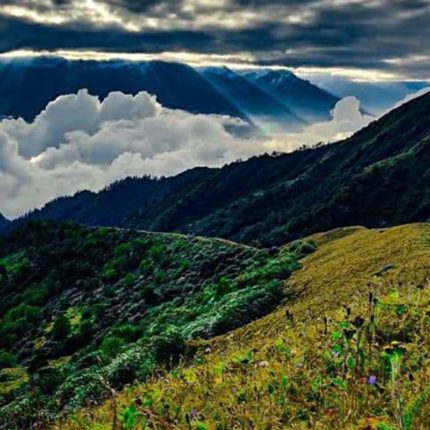
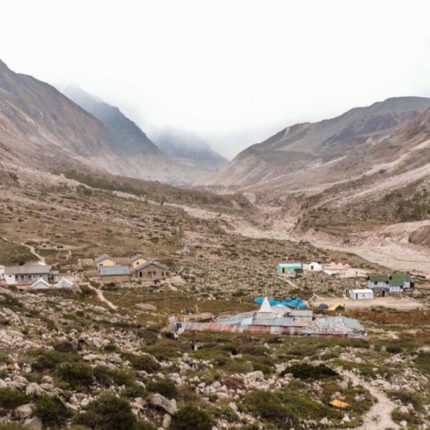
Reviews
There are no reviews yet.